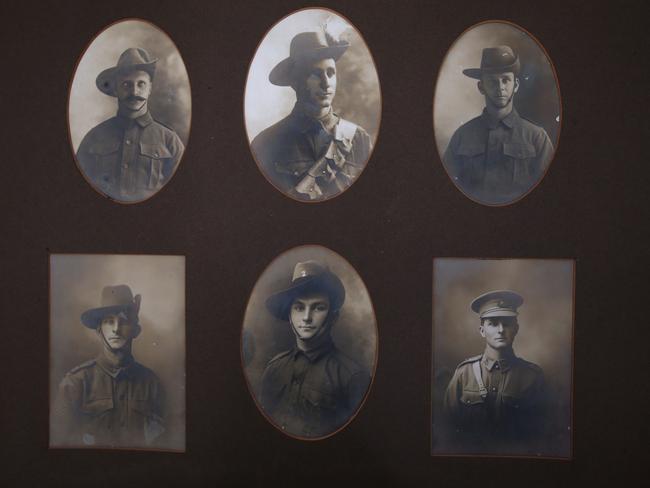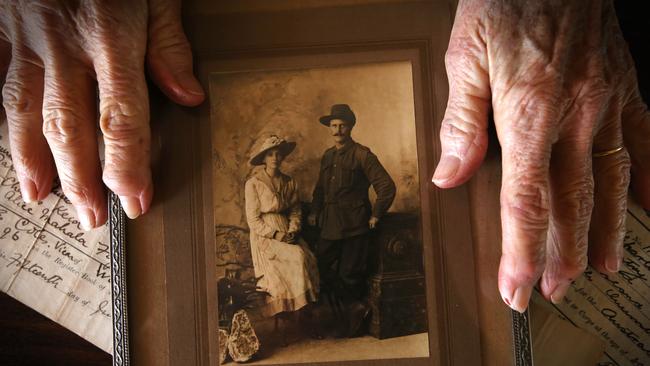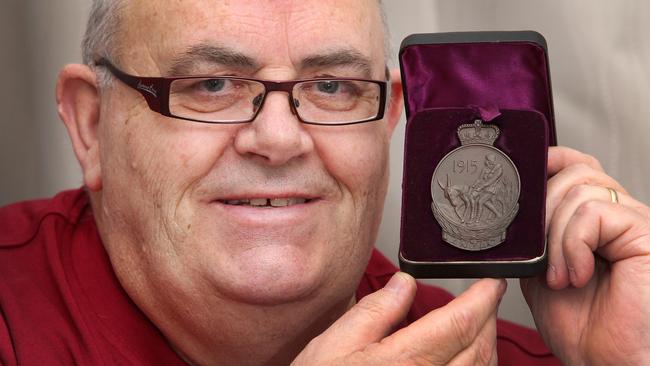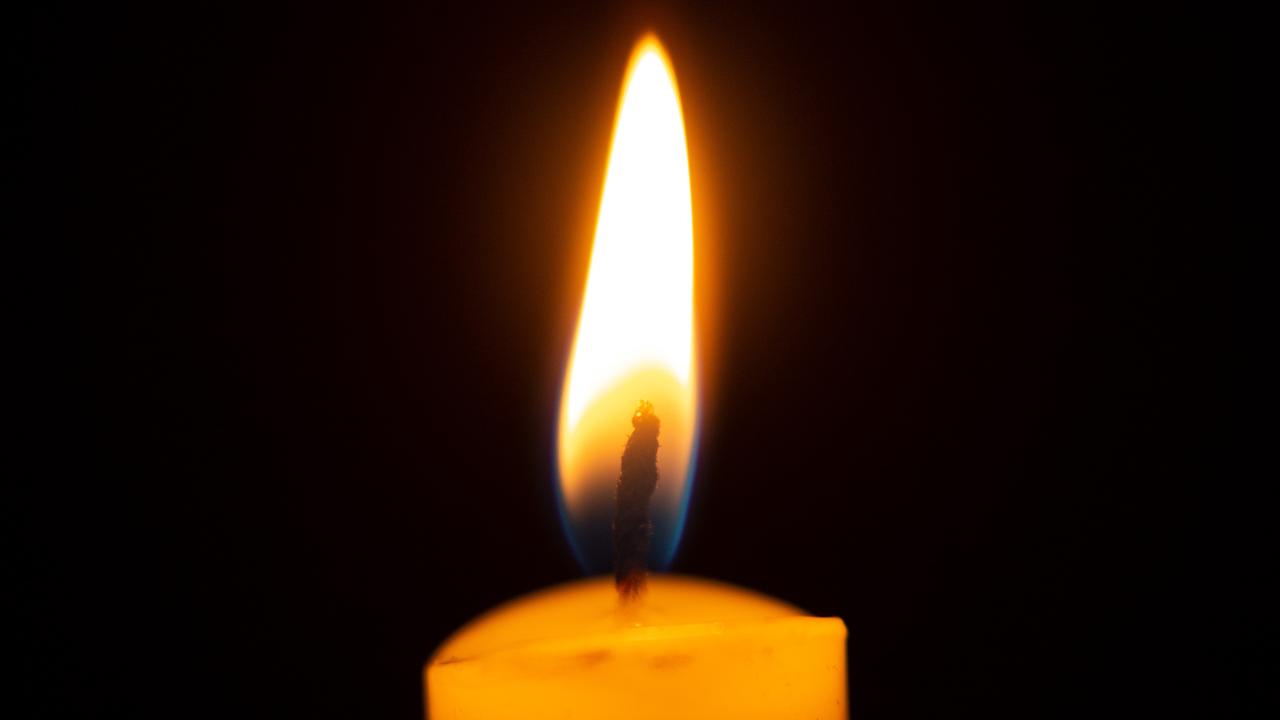World War I centenary: The Keid family lost four son in less than 2½ years
MOST mothers can’t bear the thought of losing a child. Imagine then the grief of Mary Keid who lost four of her boys in less than 2½ years in ‘The Great War.’
ANZAC Centenary
Don't miss out on the headlines from ANZAC Centenary. Followed categories will be added to My News.
WHEN exactly the telegram arrived at the Graceville home of Mary and Charles Keid isn’t known.
In the frenzy and fury of Gallipoli, there was often a long lag time between soldiers’ deaths and the news reaching loved ones.
It was certainly in either late June or July 1915. It was in the customary pink, marked “urgent” and bearing the standard and divorced words of military officialdom: “convey deep regret and sympathy of their Majesties the King and Queen”.
The Keids had lost second-eldest son Bill on June 23, 1915, at the bloody Quinn’s Post at Gallipoli. Later they would learn he’d died trying to save his mates, throwing his coat and then himself on to a grenade lobbed into their trench.

Then the belongings and effects began to trickle home — wallet, diary, knife, belt, Bible. Then a so-called Dead Man’s Penny and a letter from the King.
Not until two years later would they learn their son had been buried at sea, 5km off the coast of Gallipoli. He was 29.
The Keids had to live not only with that grief but the dread of knowing their five other boys were serving at the front, amid news of mounting casualties in a war that was supposed to be over in weeks.
Then in, September 1916, just over a year after Bill’s death, came two more pink telegrams. Sons Leonard and Walter were killed in a charge at The Battle of Mouquet Farm, a conflict that claimed 6300 Anzac casualties and so ravaged the Aussies and Kiwis, they had to be rested from the front for two months.
More royal letters and more Dead Man’s Pennies would lob at Molonga Terrace in Graceville. But this time, fewer personal effects – their boys’ service records state simply: “no known grave”. Their deaths would have been doubly tragic for the Keids. Leonard was a father of three and so not expected to enlist.
But after receiving an anonymous white feather in the post – the tool used to shame men into enlistment – he signed up, and brother Walter joined him in solidarity. The two probably died on the same day, September 3, 1916, and still lie somewhere in the fields of northern France. Leonard was 29, Walter just 23.
But the war wasn’t yet done with the Keids. Son Ted, the third of the six boys to enlist, had got through the eight months of Gallipoli uninjured and by mid-1917 was part of the 9th Battalion at the Third battle of Ypres on the Western Front. On November 1, 1917, Ted suffered head wounds from an artillery attack and died the next day from those wounds. He is buried at Lijssenthoek Military Cemetery in Belgium. He was 28.
It is a story as remarkable as it is tragic. Mary Keid gave birth to nine children – six boys and three girls. She’d already suffered the heartbreak of losing babies Mary and Robert in their first few months. Of the remaining six boys, a war of bewildering alliances and far removed from the tranquillity of Queensland life took four of them, all in violent deaths.
By the end of 1917, eldest son Harry and youngest son Guy were the only ones still standing. (Although, Harry was far from unscathed. He’d been badly wounded by a gunshot to the hip on the first day of fighting at Gallipoli. He spent four months in an English hospital and was in and out of hospitals with other health problems for much of the war.)
Guy was discharged and back in Australia in March 1917, eight months before the death of the fourth son, Ted. While there are questions over the reason for Guy’s sudden return, Cedric Hampson writes in his book, The Brothers Keid, that Guy had been “profoundly affected by the death of his brothers”.
“I think there’s little doubt it was for family reasons,” Hampson tells Insight. “Presumably the army decided that it was better to bring him home after the death of three brothers.”
Hampson also suggests on the day of his brothers’ deaths, Guy had spent the evening scouring the bloodstained bogs of Mouquet Farm for his brothers’ bodies – doubtless a traumatic undertaking for a 21-year-old.
Ted’s death unleashed the next remarkable and dramatic chapter in the story of the Keids. Queensland Premier Tom Ryan determined the family had suffered enough and asked the High Commissioner in London, former prime minister Andrew Fisher, to lobby Australian Corps commander General William Birdwood for the return of Private Harry Keid to Australia. In a hospital in Bath, England, at the time and now married to local woman, Laura Foyle, Harry was discharged for “family reasons” in March 1918 and returned to Brisbane.
They might be men brutal enough to fight a war. But to a mother, they are forever your boys. Mary Keid lost four of her boys in less than 2½ years in a war that made sense to few people, and certainly not to a mother in benign, suburban Brisbane.
She should, by rights, have been a broken and bitter woman. Her grief should have taken her to an early grave. But Mary Keid lived to 86 and remains in people’s memories a kindly, serene and genial woman who, instead of wallowing in grief, kept herself as busy as possible.
Peg Pearson, 91, is the daughter of surviving brother Harry Keid, and lives in Atherton in far north Queensland along with brother Walter, 78, and close to sister, Jane, 94, of Mareeba – Harry’s three surviving children.
Peg has fond memories of “Grandma Keid”, who moved to Mareeba from Brisbane to live with a granddaughter after the death of her husband, Charles, in 1926.
“She was a very serene old lady, a remarkable person,” Peg recalls. “She was very quiet, she spoke her mind but always nicely, and was forever busy sewing, tatting, reading or preparing the vegetables.”
Perhaps her strong Baptist faith helped too. But Peg believes it may all have been a symptom of the times, when displays of grief or emotion didn’t flow as freely as today, and that the calm facade masked an enduring melancholy.
“It was the age I think. Things hurt you but you just didn’t talk about it as much (as nowadays),” Peg says. “With the benefit of age, looking back, I think she was living a terrible grief, but just never showed it.”
Peg saw a rare display of disdain from Mary on a day collectors came knocking for donations for a local war memorial.
“She just looked up and said ‘sorry, not me. I already gave four sons’,” Peg recalls. “That just hurt me so much to see the look in her eye when she said it.”
Hampson, too, encountered some reticence when interviewing for his book. He says the family had been consistently discreet about the boys and the impact on Mary, either because discussing it wasn’t de rigeur, or out of solidarity for the woman herself.

“The women didn’t like to talk about it too much, it seemed too much like gossiping,” Hampson says. “They had the impression that her life had been shadowed by misery and there was good reason not to speak of it in case that ever got back to her.”
Perhaps to fill the void left by her boys, Mary and Charles took in their grandchild, Les, the eldest child of Leonard and wife Eliza, to live with them at Graceville for many years. Les later returned to his home at the insistence of Eliza’s second husband – something which poisoned relations between Eliza and the Keids.
Tragedy didn’t end for Eliza with World War I, though. Les was a prisoner of war on the Japanese POW ship the Montevideo Maru when it was torpedoed by a US submarine in 1942, killing all but three of the 1053 on board.
As author Les Carlyon writes in his book, The Great War, when men returned from the war “haunted and secretive”, it was the turn of the women and children “to suffer and to wonder what demons had come unbidden into their world”.
So it was with Harry Keid. Harry may have survived the war, but he didn’t beat it. He’d not only seen its horrors, but lost four brothers in the process.
His children talk of a grumpy, brooding man, rarely happy, sometimes affectionate, but mostly detached and always hobbling about their timber and dairy farm near Atherton. On the family’s former block is a permanent reminder of their father – a tree grown from the seed of a peach which Harry ate in Paris and had never tasted the likes of before. It’s not a majestic tree, but Walter says, but still produces sublime, pest-free peaches.
Walter recalls his father often “cranky” and, in the long dreary days of the wet season, sitting indoors reading alone for long periods. He was rarely happy, he says, particularly on Anzac Day.
“Once he tried to tell the younger ones about Anzac Day but he just broke down and couldn’t do it,” Walter says. “He was a real mess from the war.”
Peg remembers Harry often sitting alone on a log in the backyard until late at night. She also recalls Anzac Day ushering a funereal silence in to their home.

“It was just awful,” Peg adds. “He would mooch around the house all day not talking to us, or even letting us talk about Anzac Day.” Peg also believes, as the eldest son, Harry’s mood may have been blackened by a sense of survivor guilt.
Harry was closest to Ted, with whom he’d moved north to take up a farm block before the war, and with whom he’d travelled to Townsville to enlist in October 1914. His next-dearest was Walter. Consequently he named his first boy Edward, (born 1921) and referred to daughter Peg as “Walter” for almost 12 years, until his own son, Walter, was born in 1935.
From accounts of other surviving brother, Guy, perhaps Harry carried the torment for both of them. Guy is remembered as a high-spirited man with a larrikin streak, forever falling foul of military authority – resisting arrest, insulting officers, drunkenness and “using obscene language in the hearing of French womenfolk”. Guy, who had the treacherous job of stretcher bearer at Gallipoli, was reportedly present when John Simpson, of Simpson and his donkey fame, died.
Guy returned to Brisbane, lived with his parents and resumed his studies to become a highly respected geologist, working for mining concerns and moving to Tasmania where he eventually became chief geologist. He and wife Kerry adopted one child, Peg, who had five children, the eldest of whom, Barry Guy Saltmarsh, 67, has cherished memories of “Poppy”.
Barry, from Burnie in northwest Tasmania, remembers a charismatic man, understated, mischievous, generous and who loved his food – and a drink. Barry fondly recalls the times helping his grandfather build a shack at Scamander on Tasmania’s east coast, of ice creams and cordial and sitting out under the stars chatting. Guy may have been the polar opposite to Harry, but both men lived the cliche of rarely mentioning the war. Barry was 24 when Poppy died, but says he never heard him speak of his war.
“I can honestly say I never heard him talk about the war, especially the situation with his brothers,” Barry says. “Mum (Peg) didn’t speak of it much either.”
Harry and Guy were the eldest and youngest Keid boys respectively, but both died in 1969.
The public grief of the Keid family was probably submerged beneath the collective grieving of Australia that dragged on until the next war. Keid was one name among the many of the 61,700 men who never came home. Or the families of the 155,000 wounded. Or those who were gassed and coughed and itched for the rest of their lives. Or those men who were never official casualties, but came back haunted and damaged.
But it’s hard to imagine a mother who gave more or suffered more than Mary Keid, of Graceville.
mike.bruce@news.com.au
Don’t miss our 16-page commemorative magazine, The Great War, tomorrow in The Sunday Mail.
Originally published as World War I centenary: The Keid family lost four son in less than 2½ years


